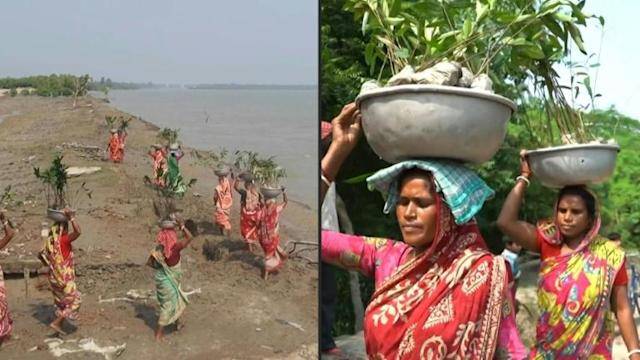
Women in the world's largest mangrove forest are planting thousands of saplings to protect their coastal regions from climate change as India confronts more violent cyclones.
The Sundarbans, which stretch into Bangladesh, are home to some of the world's most endangered animals, including the Bengal tiger and the Irrawaddy dolphin. Even though the forest has been recognized as a UNESCO World Heritage Site, it has previously been harmed by illicit logging and is periodically battered by violent monsoon storms.
Last Monday, a group of local women began the arduous process of reforesting a naked stretch of beach by walking ankle-deep down a muddy shore and balancing young plants on their heads.
"This is a storm and cyclones prone area," Shivani Adhikari, one of the women participating with the initiative, stated. "As a result, all of us ladies are planting to preserve the embankments."
According to the UN Environment Programme, mangroves protect coastlines from erosion and extreme weather events, improve water quality by filtering pollutants, and serve as nurseries for many marine creatures. They can help in the fight against climate change by storing millions of tonnes of carbon in their leaves, trunks, roots, and soil each year.
They also serve as a barrier between coastal communities and the cyclones that have ravaged the region.
"Our community will survive if these embankments are protected," said Goutam Nashkar, who lives near the project site. "We will survive if our village survives," he added. "This is our wish and our hope."
The project, which is supported by a local non-profit and the government of West Bengal, seeks to plant 10,000 mangrove plants.
Cyclones strike India's eastern provinces and Bangladesh's coast on a regular basis, claiming the lives of hundreds of thousands of people in recent decades.
While storm frequency and severity have increased as a result of climate change, mortality have decreased as a result of faster evacuations, better forecasting, and more shelters.
















